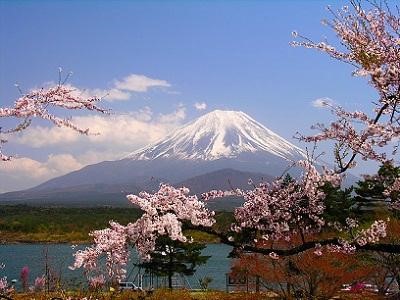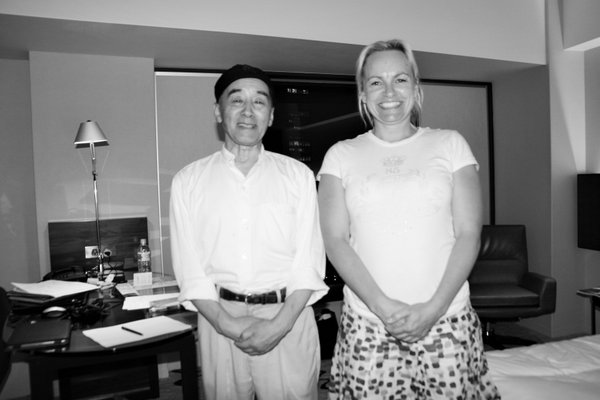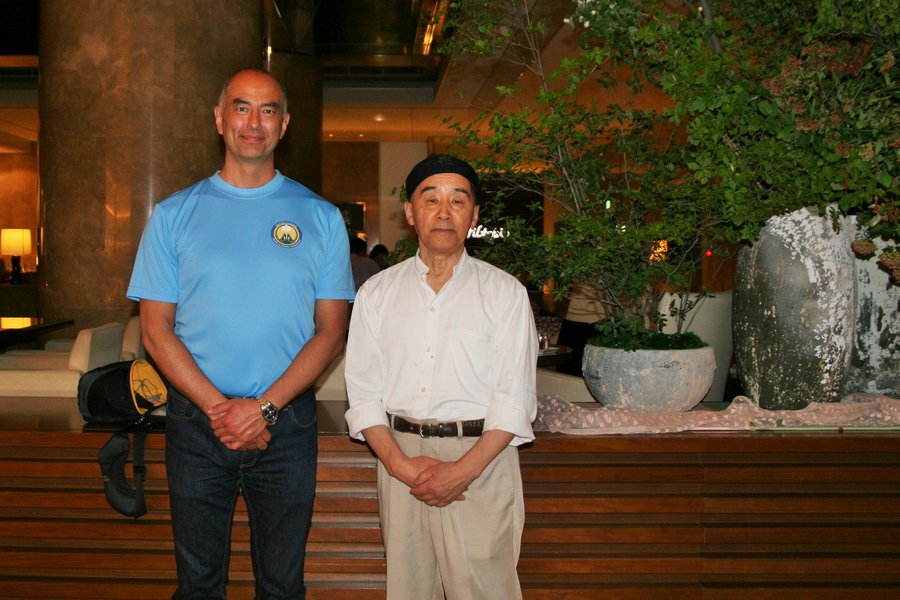
"He has arrived and is waiting for me down there," I said to my dear wife Anette, who looked in wonder at the telephone which had not rung, but then simply nodded at me. Anette and I took the elevator down and, sure enough, SST was down in the hotel lobby. SST had arrived half an hour early according to the agreement, but this was quite normal as the metro times sometimes coincide better than others. SST came smiling and greeted Anette, who hurried on to another appointment out in the city, and SST and I went to the elevator as usual, as we always do before a training camp, to drink a cup of Japanese green tea, put SST's bag in the room, exchange gifts before we start what he and I have come for; Martial arts training for Great Grand Masters, my 45th training camp with SST in total, my 40th anniversary training camp in Japan since the first time in 1989 – 25 years ago, which is also an anniversary in this regard. Which also fits very well with the upcoming 50-year anniversary story in Denmark. Which means that I have been on duty as SST's official representative, but as the first Sodenke Sensei, for approx. half of Danish history since 1967, but of course 25 years are still in the heart and mind...
Anette had "hooked" on when we had our 20th wedding anniversary, but hadn't found time in busy calendars to celebrate this together. So Anette took matters into her own hands, bought a ticket package and invited herself along on this trip. She had already made arrangements with family members in Japan and with her fifth time in Japan, she should probably enjoy the time in Japan alone sightseeing, shopping and having fun with family members while I was in training camps. It went so well, in fact, that I had her suspect that the main reason was not the 20 year wedding celebration, but rather having fun and talking with girl family members with all that entails in a big city like Tokyo. But she subsequently stubbornly denied this...

For the sake of the readers, I must try to explain the difference between Densho and Dan/Kyu degrees before I continue the story.
The Dan and Kyu system is just over 100 years old and was established in the wake of the multi-track traditional martial arts systems being opened to the public in the 1880s in Japan. As the requirements of the multi-track traditional martial arts systems were too high, long-lasting and diminishing the needs had changed, the multi-track traditional martial arts systems were dismantled into single-track martial arts systems which met the new needs requirements. The aura and history was intact from the old multi-track traditional martial arts systems, but as the single track only a shadow or sliver of the totality of martial arts. It is about wholes or fragments of the whole. There is a big difference.
Roughly and squarely explained; Before, you not only had to master everything in the supermarket, but also understand the connections, the common thread and the whole, as well as everything outside the supermarket, thus everything was one and unlimited. These are Densho degrees.
With Dan degrees today, you must master everything within e.g. oranges, apples, pears, or bananas in the fruit department, which is a section or department of a large supermarket. There is a big difference between the over 600-year-old standardized and regulated Densho degrees, to the slightly over 100-year-old unstandardized and unregulated Dan/Kyu degrees. What is best is entirely up to the individual practitioner, who is the creator of their own life.
But most people will probably understand the difference and the importance of whether you take the entire degree or just smaller parts of it. The fact that you have taken a long-term first aid course, construction course or law course does not entitle you to call yourself a doctor, engineer or lawyer, nor will you be perceived as such. This is the difference between multi-track standardized and title-protected densho degrees, and non-standardized single-track and untitled Dan/Kyu degrees.
Before meeting SST in Tokyo, I spent the weekend in Hakone doing intense martial arts training, Ki and meditation training. In the old samurai times, martial arts students often took on Musa Shugyo – a so-called training and practical testing journey with life as an effort of the student's martial arts skills. This led to many duels on this exploratory journey through the provinces of Japan for challenges, learning and optimal improvement of the student's multi-track martial arts competencies, - internal as well as external.
It is not correct that all duels were fought to a fatal outcome, but it could have a fatal or harmful outcome. Back then, you could only take Musa Shugyo if you were at least of the Densho degree Menkyo – Master of all the Martial arts (6-8.dan today). Anything else would be foolish and dangerous. Musa Shugyo would like to result in you being recognized by your grandmaster as a densho Menkyo Kaiden – Initiation license (8-10th dan today) at the end of Musa Shugyo, since after the Musa Shugyo journey you had understood and achieved the essence of martial arts and thus fulfilled the requirements therefor.
Gokui Menkyo Kaiden, also called Gokuden, is the grade above Menkyo Kaiden. This is the degree in the old days for a possible heir to a traditional martial art system, and/or the degree where you can found your own traditional martial art system, usually as an offshoot system of the main system. Gokui is also the rank of a martial art Great Grandmaster. These and densho degrees above take Shugyo, which is an essence formation journey.
For those who are interested in it, the difference in two different Shugyo can probably be best illustrated by the difference between the author of Go Rin No Sho from 1645 – The Book of the Five Rings, the samurai Miyamoto Musashi and the two samurai nobles; The travels of Tsukuhara Bokuden and Kamizumi Nobutsuna.
Miyamoto Musashi traveled around Japan, was a loner and fought more than 60 duels with many deaths until he was 28 years old.
Tsukuhara Bokuden and Kamizumi Nobutsuna also fought duels, but with few deaths for their often double to triple then younger opponents, and a great many of those defeated subsequently became apprentices.
They traveled around with many of their students – sometimes up to 100.
Today, Miyamoto Musashi is more famous than Tsukuhara Bokuden and Kamizumi Nobutsuna because he wrote a textbook that most readers admire because it is easily understandable that he fought more than 60 duels with a great many killed - before he was 28 years old, and gave his suggestion as to why. Miyamoto Musashi's Niten-ryu only exists today after a reconstruction, and is largely undocumented in the line of succession directly from the founder; Miyamoto Musashi.
Tsukuhara Bokuden and Kamizumi Nobutsuna fought their most famous duel after 50 years, without many casualties. This is because the defeated were most often already Menkyo Kaidens, and therefore already martial arts great masters who could well recognize when they were defeated. Therefore, they most often subsequently became students, and founded martial art systems which had a very large influence on the attitude, training methodology and process of optimal learning within Budo right up to today. It has been a timeless learning.
Hmmm….Hmmmm…Hmmm!….Haha!. This is how the conversation between me and SST went for the next few hours. As Jens Hanshi-dai said one day in 1996; "I don't understand a word of what you're talking about - you look at each other, grunt a little, smile, nod, laugh and gesture a little once in a while and have so... fun - it's too weird and strange for me - and probably everyone others!".
The speech quickly fell on the end of the POMW 2010-2013 project, and the start of the new health & health project; The SHIELD KISS project 2014-2020. SHIELD KISS stands for Strength Health International Empowerment Listen Doctors and Keep It Simple & Safe.
In short, the SHIELD KISS project is a 5-year health and wellness project, where the essence of western and eastern medical knowledge is brought together through a "POMW process and methodology - KISS = Keep It Simple & Safe", depending on the short- and long-term goals, you would like to achieve, and according to the Shindenkan value set "We meet people where they are and take them on a journey".
The SHIELD KISS project does NOT invent the wheel and the deep dish that have already been invented, but collects the essence of the work of other specialists, assembles this essence as a fundamental puzzle and bridge building, and to the extent necessary, verifies this in experiments.
The project manager is Honbu Competence and Development Center manager, Kimu Sensei. The project group will also ad hoc include leading specialists in sports medicine, physiotherapists, Japanese trained specialists traditionally and in the West and others - "educated in both East and West", so it is ensured that the latest research as practical experience with effect is used in the project.
The SHIELD KISS project's strategy is that the best thing in terms of health is to be as strong and healthy as possible for as many years as possible both physically, mentally, mentally and spiritually. But also accept that we are all getting older. That acute physical injuries have an impact on the psyche, and chronic physical injuries have an impact on the psyche, mentally and spiritually and vice versa. In order to achieve a "Healthy soul in a healthy body", this also requires that the person takes responsibility for his own life in all relationships, and that staying strong, healthy and fit does not need to be the great science and extremely complicated, as really many commercial providers would like to do so. Just like with the POMW project and the POMW Shooting Technical Handbook, it can be made essentially simple and safe.
SST, who is trained as a Japanese traditional specialist doctor, and Doctoris were immediately on fire. All traditional Japanese grandmasters are also trained as traditional Japanese doctors, but SST has gone a step further and for nearly 40 years has also served as a traditional Japanese specialist Doctoris alongside his other works, as a special clothing designer (e.g. Ayrton Senna's Formula 1 suit ) and martial arts grandmaster and Soké of Jokokan, Bujutsu Kodosokukai and of the family system, the 1,000 year old Bujutsu and Budo system; Yashin Mon. Yakami no Taijutsu.
Our SHIELD KISS conversations were so engrossing that they continued into dinner. After the appetizer, the waiter brought the bill when he thought we were finished. The same thing happened after the main course and the dessert, but each time we had to apologize nicely and say that we were not finished, but had simply forgotten in the SHIELD KISS talk. The fourth time was lucky for the waiter and he got his payment.
The training camp and the exchange continued intensely, as always. The main areas included the strengthening of the various organs, circuits, nerve pathways, wholes and holistic contexts, diagnosis, limitations and value creation, as well as where the boundaries and value – seen through the eyes and needs of the patient – were between the western and eastern medical education, philosophy and result creation from symptoms to cause.
Since multi-track traditional martial arts and medical science are closely related, we naturally discussed and trained this connection as well.
Time went by way too fast, but we have agreed a new SHIELD KISS and martial arts training camp in March, 2015. By then, SST will be 78 years old. It will be training camp no. 46 with SST and I'm already looking forward to it!





